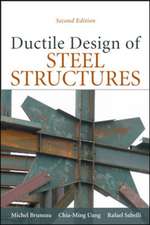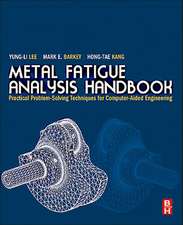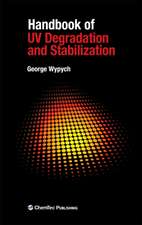Kiln-Drying of Lumber: Springer Series in Wood Science
Autor R.B. Keey, T.A.G. Langrish, J.C.F. Walkeren Limba Engleză Paperback – 5 oct 2011
Din seria Springer Series in Wood Science
- 18%
 Preț: 1543.84 lei
Preț: 1543.84 lei - 23%
 Preț: 2062.71 lei
Preț: 2062.71 lei - 18%
 Preț: 1824.32 lei
Preț: 1824.32 lei - 18%
 Preț: 2093.60 lei
Preț: 2093.60 lei - 24%
 Preț: 817.70 lei
Preț: 817.70 lei - 18%
 Preț: 1225.16 lei
Preț: 1225.16 lei - 18%
 Preț: 3288.92 lei
Preț: 3288.92 lei - 18%
 Preț: 948.29 lei
Preț: 948.29 lei - 18%
 Preț: 1222.31 lei
Preț: 1222.31 lei - 18%
 Preț: 946.87 lei
Preț: 946.87 lei - 15%
 Preț: 643.34 lei
Preț: 643.34 lei - 18%
 Preț: 1122.87 lei
Preț: 1122.87 lei - 18%
 Preț: 1020.30 lei
Preț: 1020.30 lei - 24%
 Preț: 836.40 lei
Preț: 836.40 lei - 20%
 Preț: 569.47 lei
Preț: 569.47 lei - 15%
 Preț: 638.89 lei
Preț: 638.89 lei - 15%
 Preț: 636.30 lei
Preț: 636.30 lei - 15%
 Preț: 635.31 lei
Preț: 635.31 lei - 18%
 Preț: 878.05 lei
Preț: 878.05 lei - 15%
 Preț: 646.43 lei
Preț: 646.43 lei - 18%
 Preț: 1004.67 lei
Preț: 1004.67 lei - 18%
 Preț: 894.03 lei
Preț: 894.03 lei - 15%
 Preț: 658.70 lei
Preț: 658.70 lei - 15%
 Preț: 641.53 lei
Preț: 641.53 lei - 18%
 Preț: 950.84 lei
Preț: 950.84 lei - 15%
 Preț: 645.79 lei
Preț: 645.79 lei - 24%
 Preț: 880.78 lei
Preț: 880.78 lei -
 Preț: 388.13 lei
Preț: 388.13 lei - 18%
 Preț: 780.82 lei
Preț: 780.82 lei - 18%
 Preț: 891.65 lei
Preț: 891.65 lei
Preț: 783.35 lei
Preț vechi: 955.31 lei
-18% Nou
Puncte Express: 1175
Preț estimativ în valută:
149.89€ • 156.50$ • 124.06£
149.89€ • 156.50$ • 124.06£
Carte tipărită la comandă
Livrare economică 05-19 aprilie
Preluare comenzi: 021 569.72.76
Specificații
ISBN-13: 9783642640711
ISBN-10: 3642640710
Pagini: 344
Ilustrații: XI, 326 p.
Dimensiuni: 155 x 235 x 18 mm
Greutate: 0.48 kg
Ediția:Softcover reprint of the original 1st ed. 2000
Editura: Springer Berlin, Heidelberg
Colecția Springer
Seria Springer Series in Wood Science
Locul publicării:Berlin, Heidelberg, Germany
ISBN-10: 3642640710
Pagini: 344
Ilustrații: XI, 326 p.
Dimensiuni: 155 x 235 x 18 mm
Greutate: 0.48 kg
Ediția:Softcover reprint of the original 1st ed. 2000
Editura: Springer Berlin, Heidelberg
Colecția Springer
Seria Springer Series in Wood Science
Locul publicării:Berlin, Heidelberg, Germany
Public țintă
Professional/practitionerCuprins
1 The Structure of Wood.- 1.1 The Structure of Softwoods.- 1.2 The Structure of Hardwoods.- 1.3 Cell-Wall Structure and Composition.- 2 Wood-Water Relationships.- 2.1 Water in Wood.- 2.2 Moisture Sorption.- 2.3 Fibre Saturation and Maximum Hygroscopic MoistureContent.- 2.4 Theories of Sorption.- 2.5 Heat of Sorption.- 2.6 Response to Environmental Changes.- 3 Evaporation and Humidification.- 3.1 Moisture in Air.- 3.2 Enthalpy of Moist Air.- 3.3 Adiabatic Saturation and Wet-Bulb Temperatures.- 3.4 Humidity Charts.- 3.5 Ideal Heat Demand.- 3.6 Evaporation from a Wood Surface.- 3.7. Subsurface Evaporation.- 3.8 Mass-Transfer Coefficient Measurements.- 4 Wood-Drying Kinetics.- 4.1 Empirical Observations.- 4.2 Normalisation of Drying-Rate Curves.- 4.3 Pathways for Moisture Movement in Wood.- 4.4 Selection of Drying Models.- 5 Moisture Diffusion.- 5.1 Driving Forces for Diffusion.- 5.2 Penetration Periods and Regular-Regime Drying.- 5.3 Theoretical Modelling of Diffusion Coefficients.- 5.4 Experimental Measurements of Diffusion Coefficients.- 5.5 Conclusions.- 6 Multiple-Mechanism Models.- 6.1 Fundamental Equations.- 6.2 Experimental Observations.- 6.3 The Physical Process of Drying for a Softwood, Pinus radiata.- 6.4 Mixed-Wood Boards.- 6.5 Conclusions.- 7 Lumber Quality.- 7.1 Gross Features of Wood.- 7.2 Intrinsic Features of Wood.- 7.3 Processing Implications.- 8 Stress and Strain Behaviour.- 8.1 Mechanical Analogues.- 8.2 Shrinkage.- 8.3 Instantaneous Strain.- 8.4 Viscoelastic Strain.- 8.5 Mechanosorptive Strain.- 8.6 Relative Magnitude of Strain Components.- 8.7 Solution Procedures.- 8.8 Experimental Apparatus.- 8.9 Applications.- 9 Airflow and Convection.- 9.1 Airflow in a Batch Kiln.- 9.2 Flow between Boards.- 9.3 Convection in Kilns.- 9.4 Bypassing.- 9.5 Kiln Economics.- 10 Kiln Operation.- 10.1 Drying under Constant External Conditions.- 10.2 Drying under Variable External Conditions.- 10.3 Practical Kiln Schedules.- 10.4 General Practical Considerations.- 10.5 End-Moisture Specification.- 10.6 Handling Kiln-Dried Lumber.- 11 Pretreatments of Green Lumber.- 11.1 Protecting Wood Prior to Drying.- 11.2 Physical Methods to Improve Permeability.- 11.3 Low-Temperature Predrying.- 11.4 Heat Treatment.- 11.5 Prefreezing.- 11.6 Antishrink Chemicals.- 11.7 Presurfacing.- 11.8 Green Finger-Jointing and Cutting Blanks.- 11.9 Precoating.- 11.10 Presorting.- 12 Less-Common Drying Methods.- 12.1 Solar Kilns.- 12.2 Dielectric Drying.- 12.3 Superheated Steam Drying.- 12.4 Vacuum Drying.- 12.5 Dehumidifier Kilns.- References.- Species Index.
Caracteristici
Bridges the gap between theoretical text and application handbooks









